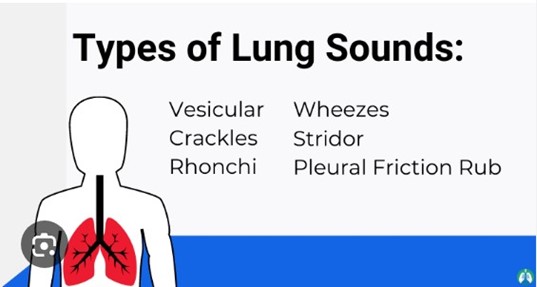The practical nurse (PN) is assisting with the admission of a client with complications of left-sided heart failure. Which focused assessment should the PN implement first?
Heart sounds
Chest pain
Bilateral lung sounds
Mood and affect
The Correct Answer is C
c) Bilateral lung sounds.
Explanation:
When admitting a client with complications of left-sided heart failure, the practical nurse (PN) should prioritize assessing the client's bilateral lung sounds. Left-sided heart failure can result in the accumulation of fluid in the lungs, leading to pulmonary congestion and impaired gas exchange. By auscultating the client's lung sounds, the PN can assess for the presence of crackles, wheezes, or diminished breath sounds, which are indicative of pulmonary congestion and fluid accumulation. This assessment helps to identify the severity of the client's condition and guides further interventions and treatment.
While assessing heart sounds (option a) is important in evaluating cardiac function, assessing lung sounds takes priority as pulmonary congestion is a common manifestation of left-sided heart failure. Chest pain (option b) is a significant symptom that should be assessed promptly, but in this scenario, the focus is on assessing for signs of pulmonary congestion and impaired gas exchange. Assessing the client's mood and affect (option d) is important for a comprehensive assessment, but it is not the priority when the client is admited with complications of left-sided heart failure.
The other options are considered incorrect because they are not the priority assessments when admitting a client with complications of left-sided heart failure.
Option a) Heart sounds: While assessing heart sounds is important in evaluating cardiac function, the priority in this scenario is to assess for pulmonary congestion and impaired gas exchange. Assessing bilateral lung sounds allows the practical nurse to gather immediate information about the client's respiratory status and the presence of fluid in the lungs.
Option b) Chest pain: Chest pain is a significant symptom that should be assessed promptly, as it could indicate various cardiac or respiratory conditions. However, in this specific scenario, the priority is to assess for signs of pulmonary congestion, which can have a more immediate impact on the client's respiratory function.
Option d) Mood and affect: Assessing the client's mood and affect is important for a comprehensive assessment of their emotional well-being. However, when admitting a client with complications of left- sided heart failure, the priority is to assess their physical condition, particularly the respiratory status, to address any immediate concerns related to pulmonary congestion and impaired gas exchange.
 |
Nursing Test Bank
Naxlex Comprehensive Predictor Exams
Related Questions
Correct Answer is ["A","C","E"]
Explanation
Choice A reason: Asking how they are managing at home is an appropriate action by the nurse because it shows interest and respect for the client's situation, needs, and preferences.
Choice B reason: Going automatically into the client's bedroom is not an appropriate action by the nurse because it violates the client's privacy and autonomy. The nurse should ask for permission before entering any room in the client's homE.
Choice C reason: Arranging mutual future visits is an appropriate action by the nurse because it demonstrates collaboration and continuity of care with the client.
Choice D reason: Thanking the client for arranging a home visit is not an appropriate action by the nurse because it implies that the nurse is doing a favor for the client, rather than providing professional servicE.
Choice E reason: Sitting down and discussing with the client and family members is an appropriate action by the nurse because it facilitates communication, rapport, and education with the client and their support system.
Correct Answer is C
Explanation
Whether you are a student looking to ace your exams or a practicing nurse seeking to enhance your expertise , our nursing education contents will empower you with the confidence and competence to make a difference in the lives of patients and become a respected leader in the healthcare field.
Visit Naxlex, invest in your future and unlock endless possibilities with our unparalleled nursing education contents today
Report Wrong Answer on the Current Question
Do you disagree with the answer? If yes, what is your expected answer? Explain.
Kindly be descriptive with the issue you are facing.
